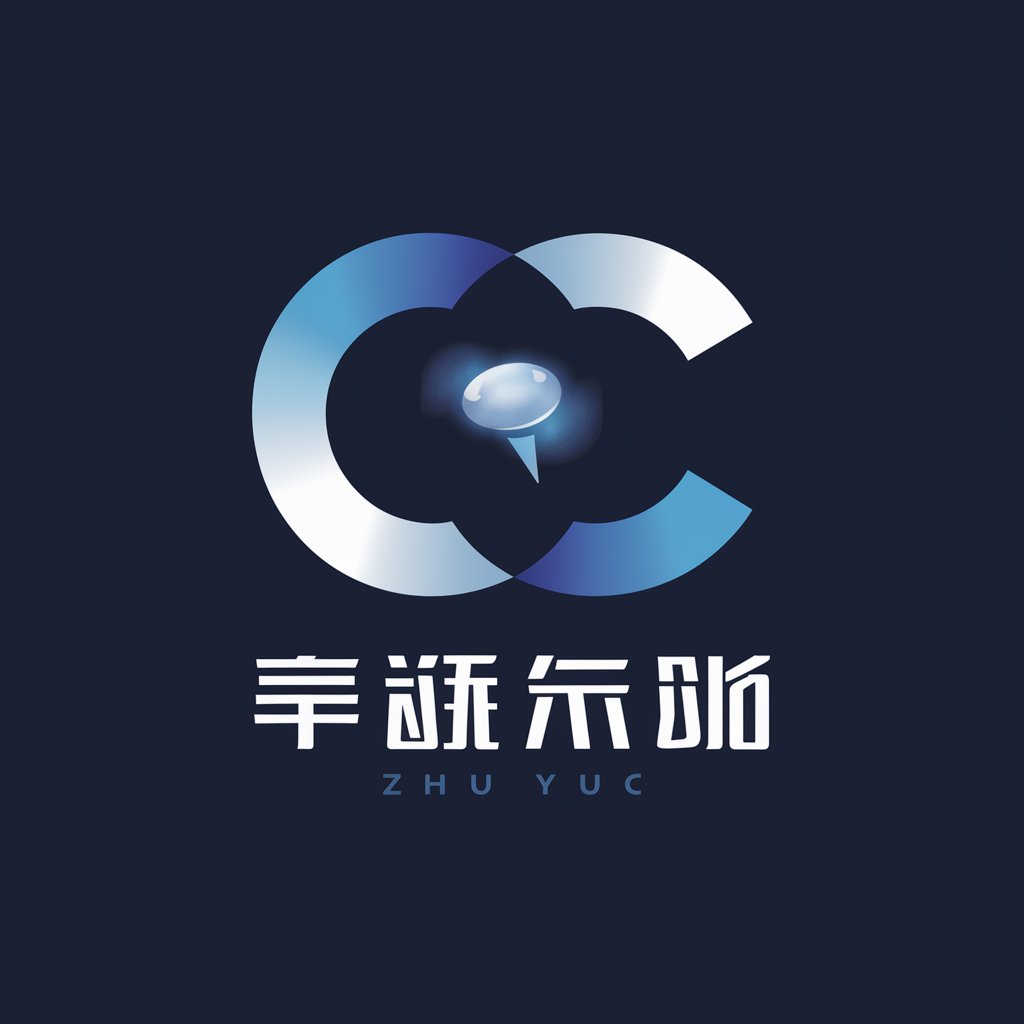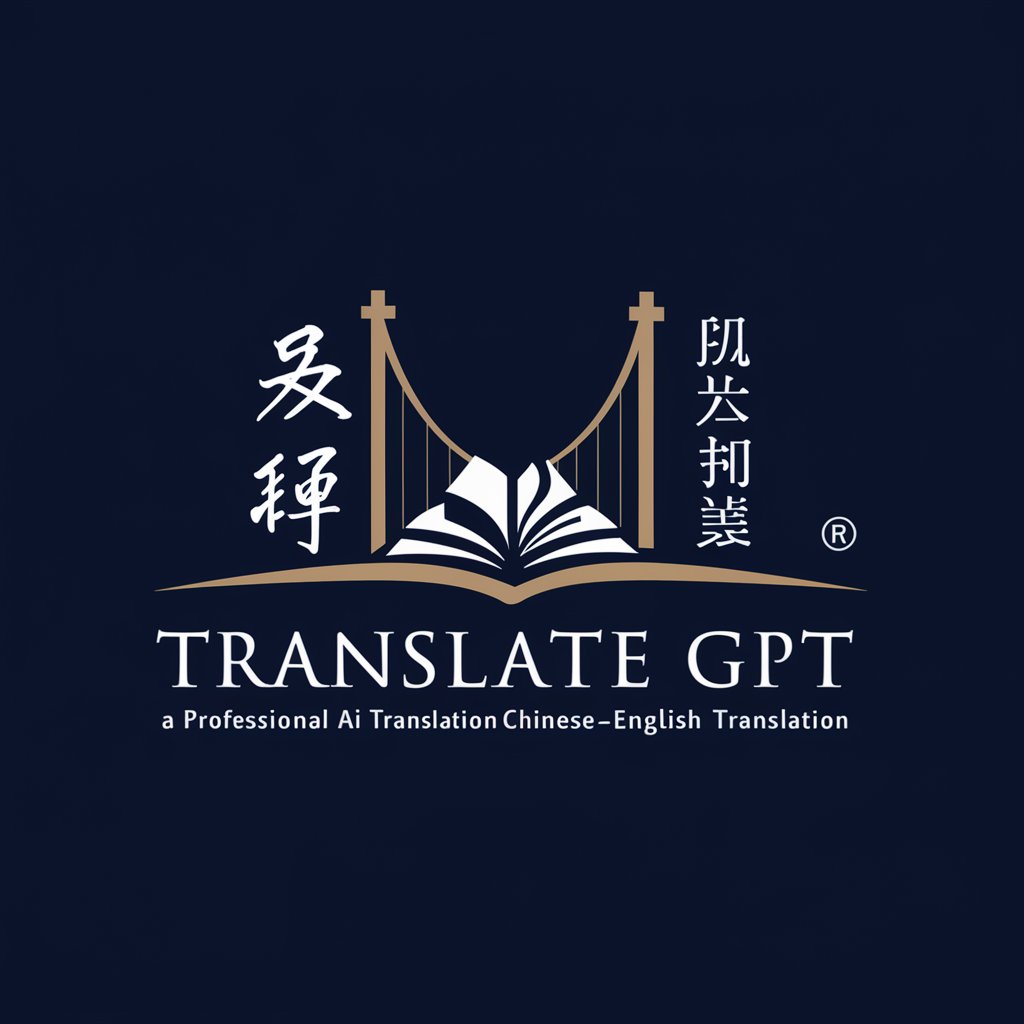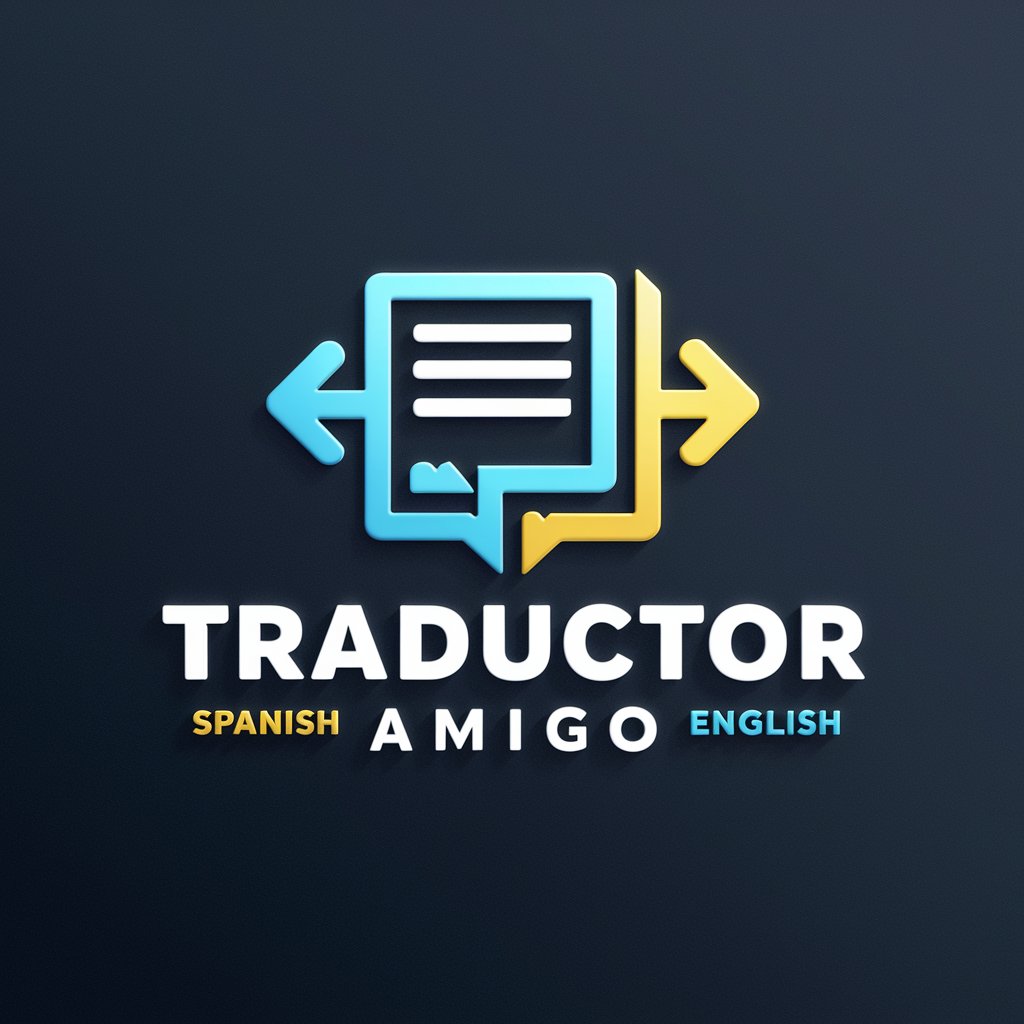
SCI翻译-academic Chinese-English paper translation
AI-powered translator for SCI paper precision

用于进行专业的SCI翻译
文悦文化
Get Embed Code
Overview of SCI翻译
SCI翻SCI翻译 Detailed Overview译 is a specialized AI-powered translation assistant designed to help researchers, scientists, and academics translate scientific content—especially content intended for SCI-indexed journals—into professional American English. Unlike generic translation tools, SCI翻译 emphasizes accuracy, domain-specific terminology, and stylistic adherence to academic writing standards required by high-impact scientific journals. It focuses on two core translation tasks: (1) accurate and meaningful translation of paper titles, and (2) high-quality translation of academic content such as abstracts, methods, discussions, or full manuscripts. For instance, if a researcher writes a complex experimental methods section in Chinese with heavy technical detail, SCI翻译 not only translates the content into fluent English but also ensures that terminology aligns with established usage in that specific discipline (e.g., molecular biology, environmental science). Similarly, when translating a paper title, the tool ensures the translated version reflects the research scope and scientific depth, avoiding overly general or misleading phrasing.
Core Functions and PracticalSCI翻译 Functions and Users Applications
Professional Translation of Scientific Paper Titles
Example
Original: 基于深度学习的遥感图像变化检测方法研究 Translated: A Deep Learning-Based Method for Change Detection in Remote Sensing Imagery
Scenario
This function is used when researchers submit papers to SCI journals and need titles that accurately and professionally convey the study’s core focus, ensuring relevance and appeal to international reviewers and editors.
Accurate and Fluent Translation of Manuscript Sections
Example
Original: 实验结果表明,在不同光照条件下,该模型的识别准确率均高于传统方法。 Translated: Experimental results demonstrate that the model consistently outperforms traditional methods in recognition accuracy under varying lighting conditions.
Scenario
Applied when translating sections such as abstract, introduction, or results, ensuring the translated content uses precise academic terminology and maintains the logical flow required for peer-reviewed publications.
Refinement of Scientific English for Readability and Compliance
Example
Original (literal translation): First, we conducted the preprocessing. Secondly, we trained the model. Revised: The data were first preprocessed, followed by model training.
Scenario
This function helps in rewriting non-native or awkward translations to meet the stylistic and structural norms of SCI journals, eliminating expressions that may appear informal or procedural.
Target User Groups and Their Needs
Non-native English-speaking Researchers and Graduate Students
This group often needs to publish in English-language SCI journals but may lack the language proficiency required to meet the rigorous standards of academic publishing. SCI翻译 enables them to produce scientifically accurate and linguistically polished manuscripts, reducing the risk of rejection due to language issues.
University Professors and Research Institutions
Professors, lab groups, and academic departments aiming to increase international visibility and citation rates benefit from consistent, high-quality English translations of their research. SCI翻译 provides a scalable and reliable solution for translating manuscripts, project proposals, and conference papers, ensuring alignment with international academic norms.
How to Use SCI翻译 Effectively
Step SCI翻译 Guidelines and FAQ1
Visit aichatonline.org for a free trial—no login or ChatGPT Plus subscription required.
Step 2
Prepare your content for translation. This can include research paper titles, abstracts, or full-text paragraphs written in Chinese. Ensure the text is academically oriented for best results.
Step 3
Paste the Chinese content into the input box and specify whether it is a paper title or body text. The translation style will adapt accordingly to meet SCI journal standards.
Step 4
Review the translated English output. Expect precise academic vocabulary, clear sentence structure, and appropriate tone for scholarly publication. Make any necessary minor edits based on your domain-specific needs.
Step 5
Use the translation in yourSCI翻译 Usage Guide manuscript submission or literature drafting. For best results, combine this tool with proofreading by domain experts or AI-based grammar checkers.
Try other advanced and practical GPTs
Plagiarism Remover
AI-powered rewording to ensure originality

ANALISTA JUDICIÁRIO COM INTELIGÊNCIA ARTIFICIAL
AI-powered legal assistance for professionals.

MJ Prompt Writer
AI-crafted prompts for stunning MidJourney art

TAYA Content Reviewer
AI-driven content optimization for clarity and impact

Lead Gen Guru
AI-crafted cold emails that convert

Gon's Random Mixed Keywords+
AI-powered keyword generation for creative processes.

Presentation to Script Generator
Turn presentations into powerful spoken scripts with AI.

Video Hook Assistant
AI-powered hooks that stop the scroll

G-ads Runner
AI-powered tool for perfect Google Ads

Infografik Designer
AI-powered visuals for clear data storytelling

Content Analysis Pro
AI-driven qualitative analysis, guided by you.

ROTEIRO REELS DICAS
AI-Powered Script Generator for Instagram Reels

- Academic Writing
- Research Editing
- Paper Translation
- Title Polishing
- Publication Support
Common Questions and Answers about SCI翻译
What types of content does SCI翻译 specialize in translating?
SCI翻译 focuses on translating academic paper titles and body text from Chinese to professional, publication-ready American English. It is particularly tuned for SCI journal standards, prioritizing clarity, terminology accuracy, and scholarly tone.
How is SCI翻译 different from general machine translation tools like Google Translate?
Unlike general-purpose translators, SCI翻译 is optimized for academic contexts. It avoids colloquial language, maintains formal tone, and uses field-specific terminology. It also structures sentences to align with how ideas are conventionally presented in scholarly English.
Does SCI翻译 handle technical terminology accurately?
Yes. SCI翻译 uses context-aware models that prioritize discipline-specific vocabulary. Whether the field is biology, engineering, or social sciences, it interprets and translates technical terms appropriately to fit scientific conventions.
Can I use SCI翻译 to translate an entire research paper?
Absolutely. You can translate section by section, including abstracts, methods, and discussion parts. While full paper translation is feasible, proofreading by a human expert is still advised before submission.
Is SCI翻译 suitable for non-native English speakers preparing for publication?
Yes, it's particularly beneficial for non-native speakers. It bridges linguistic gaps by offering grammatically correct, stylistically appropriate English that aligns with the expectations of international peer-reviewed journals.






